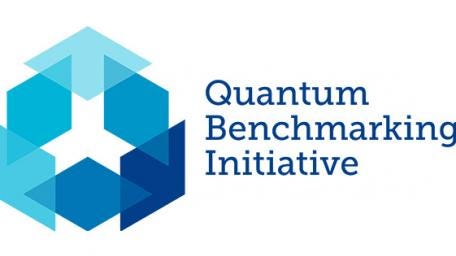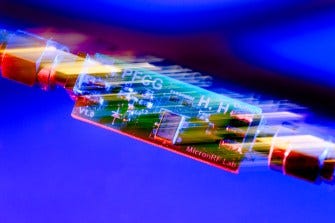Quick Recap
Qryptonic LLC launched Q-Strike™ 5.1, identifying over 300 vulnerabilities and offering a $1M guarantee. D-Wave teamed with Japan Tobacco Inc. (pharmaceutical division) to deliver a 2025 quantum proof-of-concept for drug discovery that outperforms classical LLM training (or so they say), and DARPA’s Quantum Benchmarking Initiative welcomed Photonic Inc., Quantinuum, Alice & Bob, IBM, IonQ, and Xanadu among others to pursue utility-scale systems by 2033. André M. König warns that US tariffs may form tech blocs and disrupt supply chains, reflecting geopolitical tensions in quantum technology. D-Wave’s claim of quantum supremacy sparks debate, with Edd Gent from IEEE Spectrum highlighting skepticism by researchers at EPFL and the Flatiron Institute. Amara critiques near-term algorithms like VQE and QAOA as flawed, citing Zapata Computing’s 2024 closure to question the real impact of such approaches.
The April’s Fools edition
April’s fools edition!
You will be receiving this on April 7th, but I wanted to take stock of the best April’s fools Quantum stories that were published last tuesday. Some of these are no jokes! So you’ll have to detangle which stories are real.
The Quantum Insider Trademarks The Letter Q™
The Quantum Insider humorously announced they had trademarked the letter "Q," claiming exclusive rights to its use in all quantum computing contexts.Quantum Computing Inc. Sued for Securities Law Violations
A press release announced that Quantum Computing Inc. was being sued for allegedly overstating their quantum capabilities, with claims that their quantum computer was, in fact, just a repurposed classic calculator.
JPMorgan Just Beat Big Tech to a Quantum Breakthrough (Observer) – In a twist no one saw coming, a major bank leapfrogged tech giants in quantum computing. JPMorgan’s researchers used a quantum computer to generate random numbers – a world-first achievement in randomness generation
A Computer Has Achieved “Quantum Supremacy” On Real-World Problem For First Time, Company Claims (IFLScience) – Quantum startup D-Wave announced it solved a useful problem so fast it left supercomputers in the dust – a milestone dubbed “quantum supremacy.” In a peer-reviewed study, D-Wave’s prototype quantum machine simulated a complex magnetic material in minutes, a task they say would take a top supercomputer nearly one million years (and more energy than the world consumes in a year) to match
CERN Scientists Find Evidence of Quantum Entanglement in Sheep
A spoof article reported that CERN scientists discovered quantum entanglement in sheep, suggesting that when one sheep turns, its entangled partner does so simultaneously, regardless of distance.Entangled in self-discovery: Quantum computers analyze their own entanglement (Tohoku Univ. via ScienceDaily) – This one sounds like a geeky parody: quantum computers doing soul-searching. In a new study, researchers literally taught a quantum computer to examine and protect its own quantum entangled states. The team developed an algorithm that lets a quantum processor probe the very phenomenon that gives it power – entanglement – without breaking it. As the press release puts it, “similar to humans going on journeys of self-discovery, quantum computers are also capable of deepening their understanding of their own foundations”
The Week in Quantum Computing
Japan Tobacco and D-Wave Announce Quantum Proof-of-Concept Outperforms Classical Results for LLM Training in Drug Discovery
Japan Tobacco Inc. (pharmaceutical division) and D-Wave revealed a 2025 quantum proof-of-concept that outperforms classical models in training large language models for drug discovery. They combined quantum computing’s advanced capabilities with pharmaceutical expertise to surpass conventional methods. According to D-Wave’s release, “Quantum Proof-of-Concept Outperforms Classical Results for LLM Training in Drug Discovery,” underscoring the synergy’s potential to accelerate candidate drug design. This initiative highlights an industry-wide drive for quantum-based solutions, reflecting a rigorous leap in AI-driven research for molecule exploration and analysis.
(Note from the pirate: I have not seen a paper nor any specific proof or benchmark on those claims. Considering the limitations on current quantum systems, I would take this story with some skepticism, specially when it gets to quantum improving LLM training).
D-Wave Supremacy Controversy Overshadows Real Progress
D-Wave from Palo Alto claims quantum supremacy in 2025, stirring controversy among experts. Edd Gent from IEEE Spectrum highlights the intense debate around quantum annealing-based hardware. D-Wave’s Advantage2 with about 1,200 qubits tackled quantum simulations, while critics from École Polytechnique Fédérale de Lausanne and the Flatiron Institute used classical hardware to challenge its assertion. “Our claim is this machine can simulate some problems that cannot be solved classically,” says Mohammad Amin, D-Wave’s chief scientist. However, researchers note rapidly evolving classical methods. ETH Zurich’s Juan Carrasquilla underscores that updated approaches can replicate parts of D-Wave's results, but scaling remains uncertain. This controversy showcases the delicate balance between scientific breakthroughs and skepticism in quantum computing’s accelerating evolution.
https://spectrum.ieee.org/d-wave-quantum
Qryptonic Unveils Q-Strike 5.1 for Rapid Quantum Vulnerability Testing
Qryptonic LLC has unveiled Q-Strike™ 5.1, a quantum-enabled penetration testing platform that discovers cryptographic flaws in under 72 hours. Over 300 vulnerabilities have been identified across finance, healthcare, technology, and legal sectors. The product includes a $1M guarantee and aligns with NIST guidance. Jason Nathaniel Ader, Co-Founder at Qryptonic, says, “With this platform, organizations can see exactly where they’re vulnerable.” Dustin Moody from NIST emphasizes, “A proactive approach now will help ensure that sensitive data remains protected.” The platform addresses RSA, ECC, and emerging post-quantum algorithms, reflecting the urgency of quantum security in 2025.
https://www.pr.com/press-release/935099
Quantum Computing's dirty little secret
In 2025, quantum researcher Amara writes, “The problem of near-term quantum computing is not one of bad devices but bad algorithms.” She criticizes the Variational Quantum Eigensolver (VQE) and the Quantum Approximate Optimization Algorithm (QAOA) as “bad heuristics,” pointing out that their parameter-heavy approaches and unreliable results fail to outperform classical methods. At Zapata Computing, she focused on error mitigation but found it could not replace full fault-tolerant quantum error correction. Zapata’s closure in 2024 reflects broader industry doubts. Amara questions using near-term algorithms to tackle major challenges like drug discovery and climate change, suggesting fault-tolerant machines may be the only route to real quantum advantage.
Photonic Inc. Selected for DARPA’s Quantum Benchmarking Initiative Stage A
Photonic Inc. was selected for Stage A of DARPA’s 2025 Quantum Benchmarking Initiative (QBI), which tests whether quantum computing can achieve utility-scale performance by 2033. Dr. Stephanie Simmons, Founder and Chief Quantum Officer, stated, “We are proud to be selected,” emphasizing cost, reliability, and scale for distributed quantum computing.
https://photonic.com/news/photonic-inc-selected-for-darpas-quantum-benchmarking-initiative-stage-a/
Quantinuum Selected by DARPA to Advance to First Stage of Quantum Benchmarking Initiative
Quantinuum has been selected by DARPA to advance to the first stage of the Quantum Benchmarking Initiative in 2025. This selection underscores the drive for measurable, standardized metrics in the emerging quantum computing landscape. DARPA, a key U.S. institution supporting advanced research, aims to evaluate hardware performance and accelerate scientific breakthroughs.
Alice & Bob Selected by DARPA for the Quantum Benchmarking Initiative
In 2025, Alice & Bob was selected by DARPA’s Quantum Benchmarking Initiative (QBI) to demonstrate how its cat qubit technology could achieve cost-effective, fault-tolerant quantum computing by 2033. Their approach, which inherently counters bit-flip errors, aims to reduce hardware demands for error correction. “Alice & Bob has always been solely focused on building a universal, fault-tolerant quantum computer,” declared CEO Theau Peronnin.
DARPA eyes companies targeting industrially useful quantum computers
In 2025, DARPA’s Quantum Benchmarking Initiative (QBI) includes nearly 20 quantum companies targeting utility-scale quantum systems by 2033. “For the chosen companies, now the real work begins,” says Joe Altepeter, QBI program manager, as they embark on Stage A’s six-month sprint to detail concepts for fault-tolerant machines. The effort tightens scrutiny during Stage B with rigorous R&D reviews, then concludes with Stage C’s independent verification and validation. Notably, Microsoft and PsiQuantum continue their final phase under the US2QC program integrated into QBI. The initiative involves top institutions, including IBM, IonQ, and Xanadu, each innovating with unique qubit technologies. This marks a pivotal moment demanding verifiable, industrially useful quantum solutions accelerating progress beyond mere experimental claims.
https://www.darpa.mil/news/2025/companies-targeting-quantum-computers
Tariffs will make you quantum strong
André M. König warns in “Tariffs will make you quantum strong” (2025) that the US President’s “attack, attack, attack” approach is reshaping quantum tech. “Stop complaining and seize the opportunity,” he writes, citing supply chain disruptions. Key components—like ADCs or mu-metal shields—face a US near-monopoly, while rare earths and dilution refrigerators favor the rest of the world. Tariffs risk forming “tech blocs” and slowing breakthroughs, with NATO, AUKUS, and private labs wary of development delays. Heightened engineering costs and fragmented supply chains raise security concerns. This tension underscores the urgent need for resilient, globally minded quantum research.
Paper: Threshold for Fault-tolerant Quantum Advantage with the Quantum Approximate Optimization Algorithm
In 2025, a research team led by Sivaprasad Omanakuttan applies QAOA with Amplitude Amplification to random 8-SAT at the critical threshold. “We find that with QAOA depth p=623, QAOA+AA achieves a crossover with state-of-the-art classical heuristics,” declares Omanakuttan. Their approach demands 73.91 million qubits, a 10⁻³ error rate, and 1µs code cycle time to solve 179 variables in 14.99 hours. Under improved physical error rates, runtime could drop to 2.94 hours using 8.88 million qubits, outpacing a classical solver on 725,760 CPU cores. These rigorous findings, backed by optimized Hamiltonian simulation, deepen confidence that, by 2025, large-scale fault-tolerant quantum systems could finally edge out classical algorithms in critical optimization tasks.
https://arxiv.org/abs/2504.01897v1
Northeastern engineers develop next-gen chips to tackle quantum computing’s biggest bottlenecks
Northeastern engineers, led by Professors Cristian Cassella and Marvin Onabajo, are creating next-generation CMOS chips to solve QUBO problems more efficiently. They “will consume 10 times less power” and aim to handle “millions of different variables,” Cassella says. These low-power devices could address oscillator Ising machines’ inefficiencies while potentially reducing costs. The project includes students from Northeastern’s Young Scholars Program, providing hands-on experience in cutting-edge technology. “This technology could be an enabler of solving problems that can’t be currently solved with accessible computational technologies,” notes Cassella. By 2025, such advancements remind us that innovation in chip design remains crucial to propel quantum computing’s progress despite inherent bottlenecks.
https://news.northeastern.edu/2025/04/04/quantum-computing-low-powered-chips/
Paper: Quantum Computing for Optimizing Aircraft Loading
In 2025, authors Ananth Kaushik, Sang Hyub Kim, Willie Aboumrad, Martin Roetteler, Albana Topi, and Richard Ashworth highlight a quantum solution for aircraft loading, acknowledging that “the aircraft loading optimization problem is computationally hard.” Their Multi-Angle Layered Variational Quantum Algorithm “can be run on near-term ion-trap quantum processing units (QPU),” enabling solutions on IonQ Aria and Forte from 12 to 28 qubits. The stated “novel cost function implementation” handles multiple constraints without slack variables, minimizing qubit overhead. “This shows the potential scalability of the method,” the researchers noted, as improved quantum hardware could extend its reach.
https://arxiv.org/abs/2504.01567v1
Quantum Outfit QuintessenceLabs Lands $15M NRF Boost
In April 2025, the National Reconstruction Fund Corporation (NRFC) invested $15 million in QuintessenceLabs’ $20 million round, aiming to expand quantum-enhanced cybersecurity. QuintessenceLabs’ statement, “This investment accelerates our product roadmap and strengthens our business development in key global markets,” underscores a significant boost for innovation in random number generation, quantum key distribution, and secure encryption. The infusion reflects growing confidence in quantum technologies’ potential to counter evolving cyber threats.
https://www.quintessencelabs.com/news/quantum-outfit-quintessencelabs-lands-15m-nrf-boost





